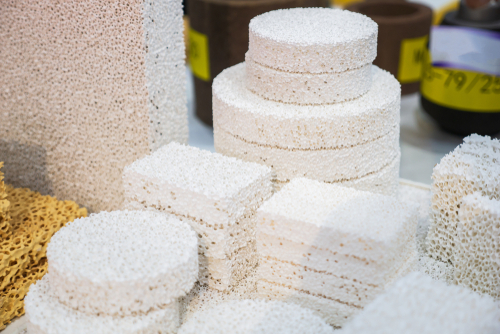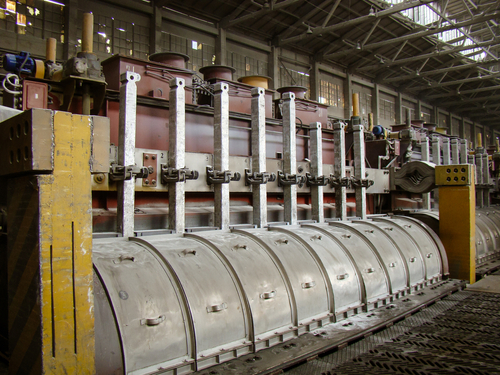There are many uses for aluminium oxide. Owing to the fact that you can machine alumina ceramic, aluminium oxide is a suitable material for a wide variety of products and applications. Similar to the manufacturing process of zirconia and different uses of zirconium dioxide, alumina remains one of the most versatile advanced ceramic materials both in terms of manufacturing and use.
However, individuals in need of advanced ceramic components are often interested in two aspects of alumina injection molding – if aluminium oxide is toxic to humans, and what it can be used for. Let’s see if we can answer these two common questions.
 Is aluminium oxide toxic to humans?
Is aluminium oxide toxic to humans?
Aluminium is the most naturally abundant type of metal on our planet, and it’s common in the form of aluminium oxide, or bauxite. This variety forms once aluminium is exposed to air and it forms a thin surface layer over aluminium, making it corrosion resistant.
Aluminium oxide is an insoluble compound of aluminium, and it does not tend to produce an acute toxic response. Chronic exposure can produce health irritation as well as some more serious health issues, but chronic exposure to aluminium oxide in today’s industry is almost non-existent.
This absence of acute toxicity apart from skin irritation, and general slight chronic toxicity of aluminium oxide is one aspect of what makes this compound a suitable and most common choice in production of advanced ceramics.
Is aluminium oxide safe for food?
Al2O3 is safe for use in food-related applications. It’s commonly used in food processing equipment, kitchenware, as well as in some additives. Its chemical inertness and high resistance to corrosion make it excellent for use in applications where it may come in contact with food.
In addition, it’s approved by regulatory agencies like the FDA for use in different food-contact applications. However, the safety depends on its purity as well as the specific application.
Can alumina be injection molded?
Yes, it can. But what is alumina injection molding? Aluminium oxide is known for its excellent mechanical properties, such as high hardness, wear resistance, and thermal stability. When combined with a binder, through the process of ceramic injection molding, it can be injected into a mold to create complex shapes with high precision. This process is called alumina injection molding.
How to make alumina ceramic?
Alumina ceramic is made by processing aluminium oxide powder. Manufacturers mix it with a binder to form a feedstock and then shape it through the process of injection molding. Once the molded part is dry, it undergoes sintering at high temperatures for densification. This process fuses the particles together and allows for a hard, durable ceramic part with exceptional mechanical properties.
What can aluminium oxide be used for?
Aluminium oxide, or alumina, is one of the most widespread technical ceramics materials used for production of various components across many industries. Alumina injection molding is the manufacturing process that provides specialized custom components for use in different industries, but their main applications are in:
- Medical industry: The chemical properties of aluminium oxide, as well as its hardness and bio-inertness make it a suitable material for various medical applications, including bionic implants, tissue reinforcement, prostheses, hip replacement bearings, etc.
- Protective equipment: The lightweight qualities and the strength of aluminium oxide make it a great choice for enhancing body and vehicle armors, as well as creating synthetic-sapphire bulletproof ballistics and windows.
- Electrical industry: The high boiling and melting points of aluminium oxide make this compound a great choice for manufacturing of high-temperature furnace insulation, as well as electrical insulators. Alumina is also widely used in the microchip industry.
- Gem industry: Aluminium oxide is used in the process of formation of sapphires and rubies. In its crystalline form, or corundum, alumina is the base element for the creation of these two precious gems.
- Industrial application: Because aluminium oxide is chemically inert, it is the perfect filler for bricks, plastics, and heavy clayware. It is also often used as the abrasive component of sandpaper, and an economical replacement for industrial diamonds.
- Automotive industry: Al2O3 is used in various high-performance applications, including:
-
- Engine components. Because of its high thermal stability and wear resistance, it’s used to produce spark plugs, seals, and heat shields, which must withstand extreme temperatures and harsh conditions.
- Exhaust systems. The high surface area and chemical inertness make it perfect for supporting catalytic materials.
- Break systems. The hardness and wear resistance of aluminium oxide help improve performance and longevity of ceramic brake pads in advanced braking systems.
- Environmental protection. Aluminium oxide is used in water treatment processes as a filtration medium and catalyst in pollution control technologies as it helps reduce harmful emissions and contaminants.
Which company provides the leading alumina injection molding services?
At Wunder Mold, we specialize in first-class alumina injection molding for various applications and purposes our clients need them for. We used advanced alumina injection molding machines and processes to ensure the highest-quality end product perfectly suited for the specific needs of our clients. We want to make sure you receive the item you want.
We have more than twenty-five years of experience in the custom alumina molding industry, and we have the knowledge and the manufacturing capacity to bring your ideas and desires into functioning and durable products. Tell us your precise requirements and we will produce results. You can reach out to us by dialing (707) 448-2349 or by sending us an email at sales@wundermold.com. Contact us today!
 Is aluminium oxide toxic to humans?
Is aluminium oxide toxic to humans?